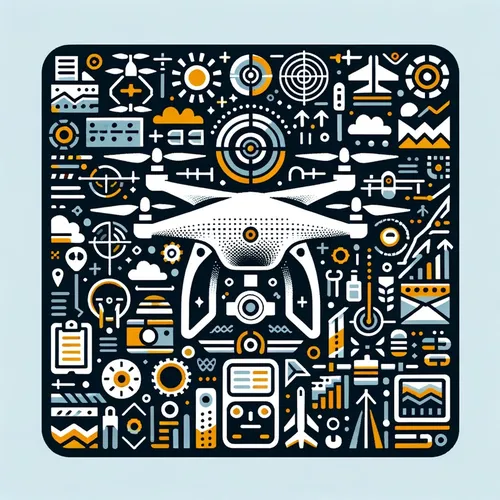Drone Pros Soar High: Mastering Skills, Regs, and Big Bucks in 2025!
- Author
- Quiet. Please
- Published
- Mon 23 Jun 2025
- Episode Link
- https://www.spreaker.com/episode/drone-pros-soar-high-mastering-skills-regs-and-big-bucks-in-2025--66708432
This is you Professional Drone Pilot: Flight Tips & Industry Updates podcast.
As commercial drone operations in the United States continue to thrive in 2025, professional pilots are navigating a landscape where advanced flight skill, regulatory agility, and business innovation are essential. Mastery of advanced flight techniques now goes beyond basic GPS stabilization—today’s pros are integrating waypoint navigation, dynamic tracking, and precise manual maneuvers to deliver cinematic footage and intricate inspection data. Optimizing equipment is equally critical: maintaining propellers, calibrating sensors, and updating firmware regularly can reduce downtime and ensure mission reliability, especially as payloads and battery technologies evolve.
Business opportunities have expanded remarkably. The commercial drone market is projected to reach nearly three billion dollars this year, driven by applications in aerial inspection, mapping, agriculture, and media production. Recent news highlights this surge: utility firms are ramping up fleet deployments for rapid infrastructure inspections, while agricultural operators are piloting carbon tracking and precision spraying solutions. Meanwhile, regulatory authorities are tightening enforcement and revising airport proximity rules, with the Federal Aviation Administration updating remote identification and safety training requirements. All Part 107 certificate holders must now complete recurrent online training every two years and carry proof of certification during all operations, so staying current is vital for compliance and client trust.
Building a robust client base means delivering consistent results and transparent pricing. Many top operators are now offering tiered packages—combining hourly rates with value-add services like high-resolution mapping or expedited delivery—to cater to diverse client needs. Demonstrating certification, insurance coverage, and a solid safety record instills confidence and distinguishes professionals in a crowded market.
Weather remains one of the greatest operational challenges. Successful pilots proactively use aviation weather tools, check for temporary restrictions, and adjust for wind, temperature, and cloud cover to maximize efficiency and minimize risk. Refined preflight planning—factoring in airspace, site-specific hazards, and alternate landing zones—should be routine. On the insurance front, the market is seeing increased demand for liability coverage that specifically addresses privacy, cyber threats, and equipment loss, reflecting both client expectations and regulatory realities.
For the future, artificial intelligence-driven flight management and automation in post-processing promise even greater efficiency and new service models. As drone adoption accelerates and regulations mature, pilots who combine technical excellence with business acumen and continual learning will lead this dynamic field. Immediate action items: update your recurrent training if due, audit your maintenance log, refresh your client portfolio, and review your insurance policy to align with current standards. Embracing innovation and professionalism means staying not just compliant, but competitive, in this rapidly advancing industry.
For more http://www.quietplease.ai
Get the best deals https://amzn.to/3ODvOta
